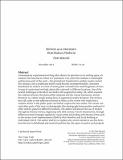Stickers as a Literature-Distribution Platform
Author(s)
Marecki, Piotr
DownloadTROPE-14-02.pdf (95.40Kb)
Terms of use
Metadata
Show full item recordAbstract
Contemporary experimental writing often directs its attention to its
writing space, its medium, the material on which it is presented.
Very often this medium is meaningful and becomes part of the work –
the printed text transfered to another media context (for instance,
into a traditional book) would become incomprehensible. Literature
distributed on stickers is a form of writing that is divided into
small fragments of texts (a type of constrained writing), physically
scattered in different locations. One of the newest challenges in
literature are books with augmented reality, AR, which examine the
relation between the physical (the medium) and the virtual
interaction. Sticker literature is a rather simple analog form of
augmented reality literature. The stickers have QR codes or web
addresses printed on them, so the viewer who reads/sees a random
sticker in the public space can further explore the text online. The
viewer can read other parts of the text on photographs (the
photograph being another medium) of other stickers placed in
different locations. The author will discuss the use of stickers
throughout literary history, beginning with 20th century French
Situationists, through different textual strategies applied by
visual artists and ending with literary forms such as the sticker
novel Implementation (2004) by Nick Montfort and Scott Rettberg or
Stoberskiade (2013). The author shall try to explain why writers
decide to use this form, how the text is distributed and received
and how the city space is used in such projects.
Date issued
2014-12-19Series/Report no.
TROPE;14-02
Keywords
fiction, literature, materiality, public space, Situationist International
Collections
The following license files are associated with this item: